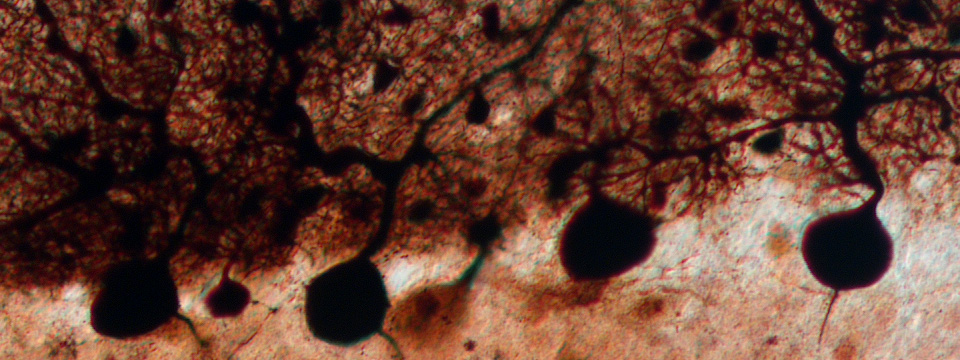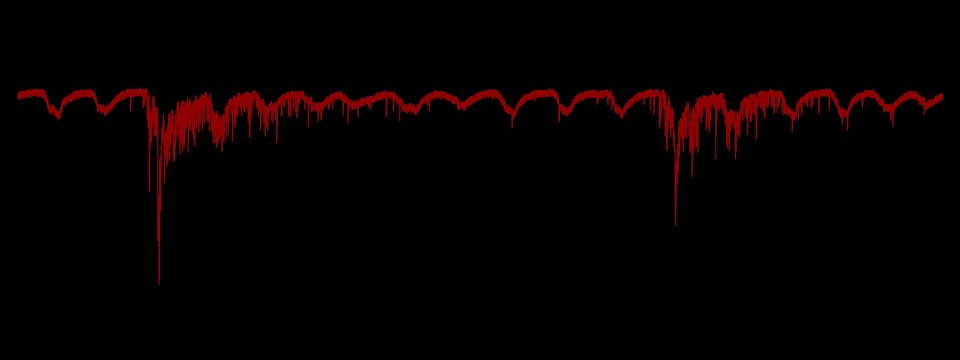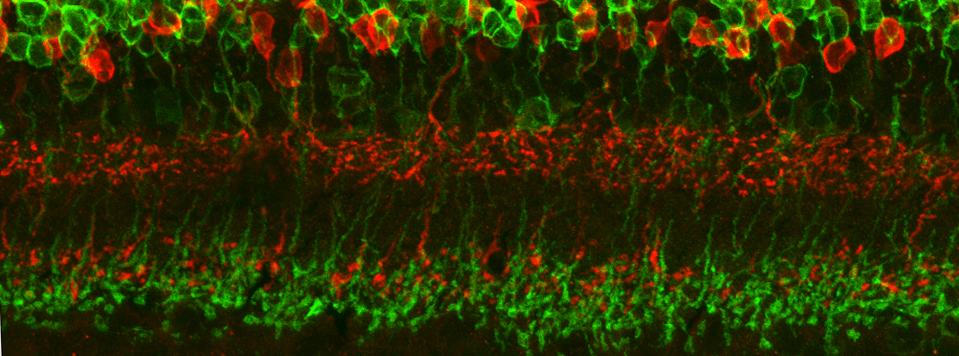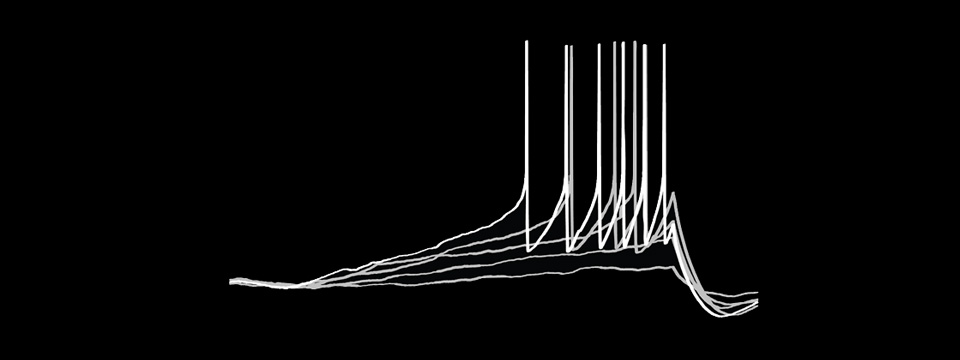Chemical synapses, neuronal firing rates and circuit behaviour
 Synaptic Activity in AII Amacrine Cells
Synaptic Activity in AII Amacrine Cells Antibody Staining of the Rat Retina
Antibody Staining of the Rat Retina Spikes in cerebellar stellate cells
Spikes in cerebellar stellate cells
The mammalian brain is constructed from a network of neuronal circuits whose activity is shaped by the combined input of distinct chemical synapses of iGluRs and GABARs as well as voltage-gated Na+ channels. Our lab is focused on understanding how these ion-channels shape distinct neuronal circuits of the developing and adult cerebellum. The cerebellum is a brain region traditionally associated with motor learning and coordination; however, emerging data suggest that defects within these circuits may lead to neurodevelopmental disorders such as autism. We study cerebellar circuits using patch-clamp electrophysiology techniques in combination with cellular imaging using multiphoton microscopy. This work is often complemented with neuroanatomical approaches. To study defects associated with autism, we compare the network properties of the cerebellum from wildtype and genetically-modified mice that lack the gene responsible for Fragile X syndrome; a neurodevelopmental disorder that represents the most common single-gene cause of autism and inherited intellectual disability. To date, this work has focused on understanding the coupling between neuronal communication and cellular metabolism. In particular, we have identified the role of reactive oxygen species as key regulators of a novel form of inhibitory GABAR synapse plasticity.
Relevant publications
Accardi et al., 2015, Journal of Neuroscience (PDF, press release)
Accardi et al., 2014, Nature Communications (PDF, press release)